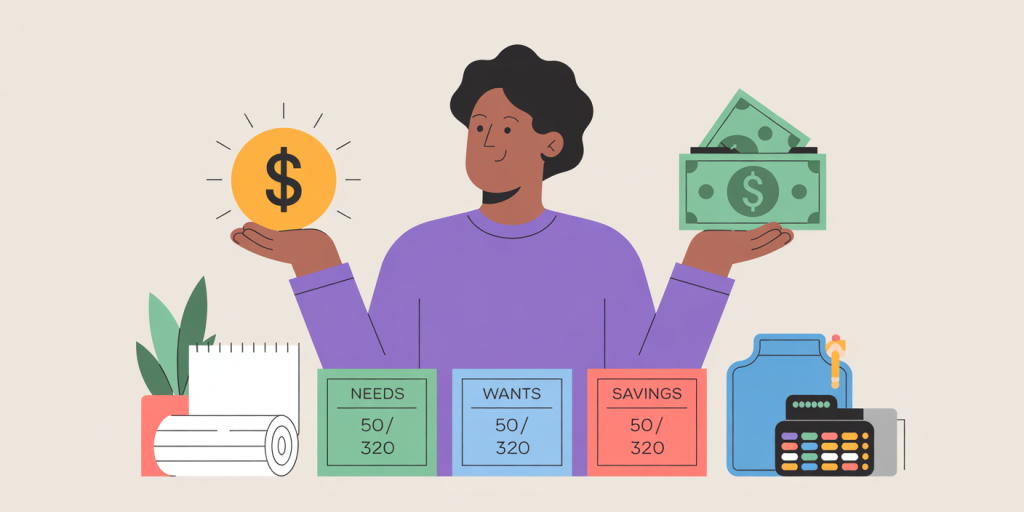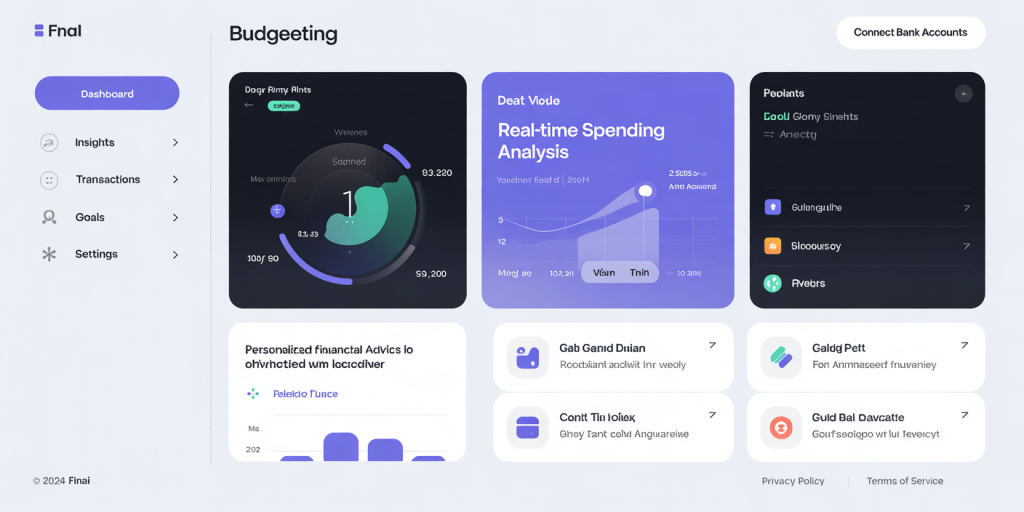Budgeting Myths That Are Keeping You Broke
Managing personal finances effectively is crucial for financial stability and growth. Yet, many individuals struggle to budget properly, not necessarily because of a lack of knowledge or income, but due to pervasive myths about budgeting. These misleading beliefs can hinder your progress, cause frustration, and ultimately keep you in a cycle of financial instability. This article debunks common budgeting myths, provides practical examples, shares data-backed insights, and offers a clearer path toward financial health.
Why Budgeting Matters More Than You Think
Budgeting is often misunderstood as merely restricting spending or tracking every penny. However, it is a powerful tool that empowers individuals to control their money, reduce debt, save for goals, and improve overall quality of life. According to a 2023 study by the National Endowment for Financial Education (NEFE), about 60% of Americans who maintain a budget report feeling in control of their finances, compared to only 25% of those who do not budget.
A well-crafted budget helps align spending with priorities and prepares individuals for unexpected expenses. For example, a young professional allocating $400 monthly to an emergency fund was able to cover a $2,000 car repair without needing high-interest credit. These outcomes exhibit the practical benefits of understanding and correctly applying budgeting methodologies.
Myth #1: Budgeting Means Restricting All Fun Expenses
Many people believe budgeting is synonymous with cutting out enjoyment and treating money like a source of stress. This misconception leads to poor adherence and abandonment of budgets entirely. In reality, progressive budgets emphasize balance, allowing discretionary spending while keeping overall finances on track.
Consider the case of Sarah, a marketing professional, who initially viewed budgeting as a strict regime. Once she adopted a flexible budget using the 50/30/20 rule—50% needs, 30% wants, 20% savings—she managed to allocate $300 monthly for dining out and entertainment. Not only did Sarah maintain her social lifestyle, but she also saved for a down payment on a house without incurring debt.

This myth can be overcome by understanding that budgets are personal frameworks based on individual priorities, not rigid constraints. Embracing budgeting as a financial guide rather than a punishment enhances long-term success.
| Expense Category | Amount Allocated | Purpose |
|---|---|---|
| Needs (Rent, utilities) | $1,200 | Essential monthly costs |
| Wants (Dining, entertainment) | $300 | Leisure and discretionary spending |
| Savings & Debt Repayment | $400 | Building emergency funds and reducing debt |
Myth #2: Budgeting Is Only for People with Low Income
A common fallacy is that budgeting is unnecessary for higher income earners. This false belief often arises from observing affluent individuals who seemingly spend without concern. However, data indicates that financial mismanagement affects all income brackets.
For instance, a 2022 report from the U.S. Federal Reserve noted that approximately 40% of households earning above $100,000 still struggle to cover a $400 emergency with cash. This highlights that without budgeting, higher-income individuals can fall into debt traps and hinder their wealth-building potential.
Take the case of John, a software engineer with a six-figure salary but lacking a clear budget. Despite his earnings, John found himself maxing out credit cards due to uncontrolled spending on gadgets and vacations. After implementing a detailed budget and tracking expenses via an app, he was able to improve savings by 25% within a year and reduce credit card debt significantly.
Therefore, budgeting is essential regardless of income level—it provides clarity, discipline, and ensures the efficient use of resources.
Myth #3: Budgeting Requires Complex Tools and Software
Many people avoid budgeting because they assume it requires expensive software or complicated spreadsheets. This misconception can discourage people from taking the first step toward managing their money effectively. In truth, budgeting can be as simple or as detailed as preferred and can be done with minimal tools.
For example, a recent survey by the Consumer Financial Protection Bureau (CFPB) revealed that 70% of individuals who budget successfully use simple methods such as pen and paper or basic smartphone notes. The key is consistency, not complexity.
Anna, a freelance graphic designer, used a straightforward notebook to track her daily income and expenditures. This practice helped her identify unnecessary subscriptions totaling $45 per month. By canceling these services, she redirected the savings toward debt repayment.
In comparing approaches, the table below illustrates common budgeting methods and their respective benefits and limitations:
| Budgeting Method | Benefits | Limitations |
|---|---|---|
| Pen & Paper | Low cost, flexible | Manual tracking, time-consuming |
| Spreadsheet (Excel) | Customizable, accessible | Requires basic computer skills |
| Budgeting Software | Automated tracking, convenience | Possible subscription cost |
| Mobile Apps | Real-time updates, reminders | Privacy concerns, device dependence |
Choosing a budgeting method that fits your lifestyle and preferences is more important than using the “best” tool.
Myth #4: Budgeting Means You Can’t Handle Emergencies
Some individuals hesitate to start budgeting because they believe it locks up their money, preventing them from being financially spontaneous or handling emergencies. On the contrary, budgeting is the best defense against financial surprises.
An emergency fund—a critical component of any budget—acts as a safety net. According to a 2023 survey by Bankrate, only 39% of Americans have enough savings to cover a $1,000 emergency expense. A budget creates room to build this fund gradually without sacrificing essential expenses.
For instance, Michael, a school teacher, set aside a modest amount of $100 monthly toward his emergency savings. When his roof suffered storm damage costing $3,500, the fund covered most costs, and he managed the rest with a low-interest loan, avoiding credit card debt.
Budgeting does not eliminate financial freedom; it enhances preparedness and peace of mind by structuring savings for unplanned needs.
Myth #5: Budgets Are Static and Must Be Perfect
Another widespread myth is that budgets must be perfect and fixed, discouraging individuals from adapting as circumstances change. Real-life financial situations are dynamic—income fluctuates, expenses rise or fall, and priorities shift.
Tom and Lisa, a dual-income couple, found their initial budget overwhelmed by unexpected childcare expenses. They revised their budget quarterly, reducing discretionary spending to adjust for new costs while still meeting savings goals. This flexibility allowed sustained financial progress without burnout.
The key principle is to view budgets as living documents that require regular review and adjustment. According to a 2022 study published by the Journal of Financial Planning, households that adapt their budgets monthly reduce overspending by 30% compared to those with static budgets.
Budgeting should evolve with your life, providing ongoing control rather than rigid control.
Comparing Common Budgeting Myths and Facts
To further clarify the misconceptions and realities, the following table summarizes the myths and corresponding facts:
| Myth | Fact |
|---|---|
| Budgeting means no fun expenses | Budgets allow balanced spending on wants |
| Budgeting is only for low-income people | Budgeting benefits all income levels |
| Budgeting needs complex tools | Simple methods can be effective |
| Budgeting restricts emergency spending | Budgets create space for emergency funds |
| Budgets must be perfect and unchanging | Budgets should be flexible and regularly updated |
Future Perspectives in Budgeting: Trends and Innovations

The future of budgeting is poised to become more accessible, real-time, and tailored to individual needs. Technological advances such as artificial intelligence (AI) and machine learning enable smarter expense tracking and predictive financial advice.
For example, AI-powered apps can analyze spending patterns and suggest personalized budget adjustments, helping users stay within limits without constant manual input. A 2024 report by Deloitte predicted that 45% of personal finance tools will integrate AI by the end of the year, enhancing user engagement and financial literacy.

Moreover, societal shifts emphasize financial wellness as an integral part of overall health, promoting proactive money management. Emerging platforms blend social community support with budgeting, offering peer motivation and accountability.
On the horizon, we can expect more seamless integration between budgeting platforms and financial institutions, providing automated and transparent financial planning with easy adjustments for life changes.
In summary, debunking budgeting myths is critical to unlocking your financial potential. Understanding budgeting as a flexible, empowering process—accessible to all income levels and adaptable to changing circumstances—will help break cycles of financial struggle. Embracing evolving technologies can further simplify this journey toward financial wellness.
